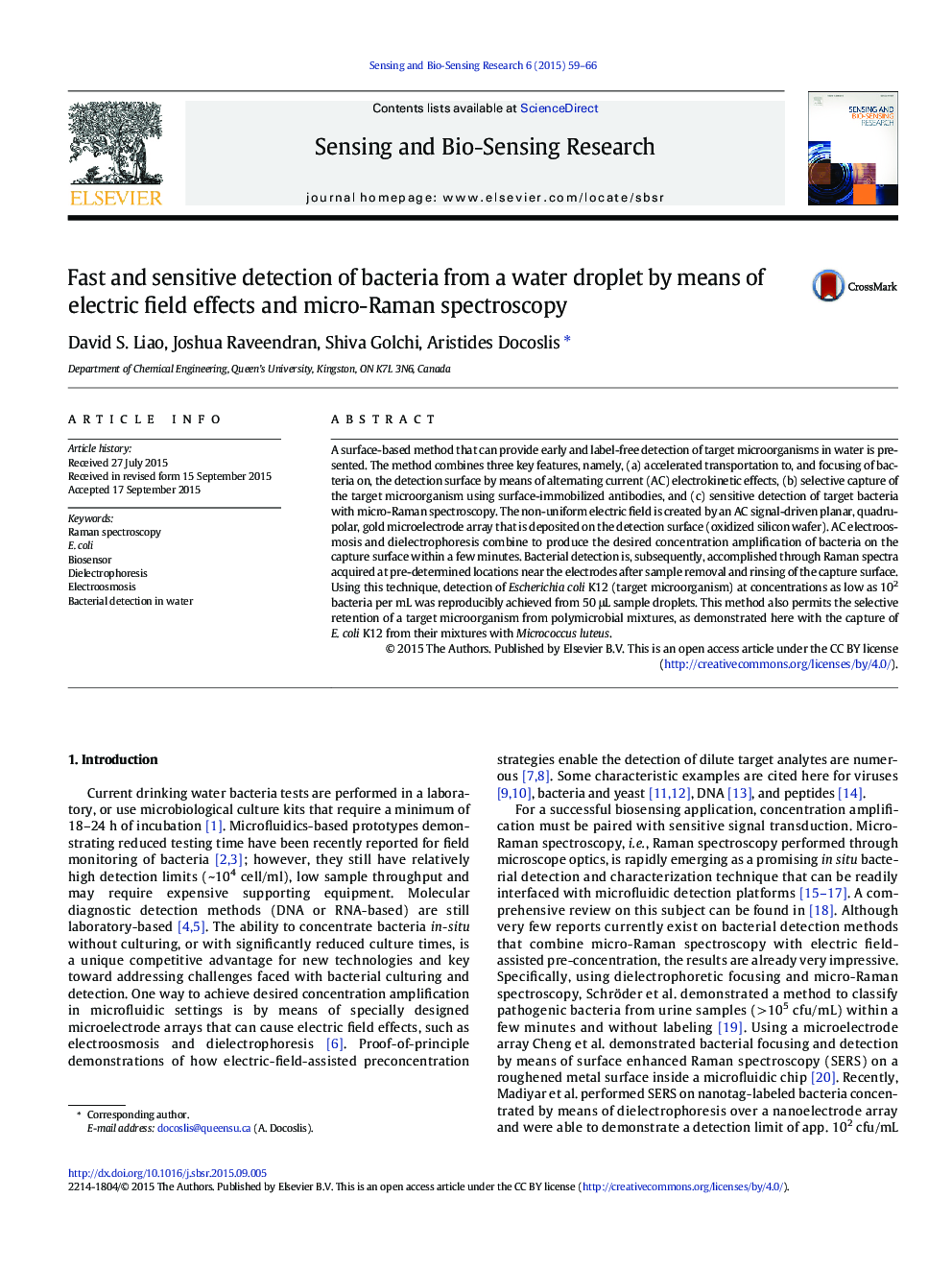| Article ID | Journal | Published Year | Pages | File Type |
|---|---|---|---|---|
| 804037 | Sensing and Bio-Sensing Research | 2015 | 8 Pages |
A surface-based method that can provide early and label-free detection of target microorganisms in water is presented. The method combines three key features, namely, (a) accelerated transportation to, and focusing of bacteria on, the detection surface by means of alternating current (AC) electrokinetic effects, (b) selective capture of the target microorganism using surface-immobilized antibodies, and (c) sensitive detection of target bacteria with micro-Raman spectroscopy. The non-uniform electric field is created by an AC signal-driven planar, quadrupolar, gold microelectrode array that is deposited on the detection surface (oxidized silicon wafer). AC electroosmosis and dielectrophoresis combine to produce the desired concentration amplification of bacteria on the capture surface within a few minutes. Bacterial detection is, subsequently, accomplished through Raman spectra acquired at pre-determined locations near the electrodes after sample removal and rinsing of the capture surface. Using this technique, detection of Escherichia coli K12 (target microorganism) at concentrations as low as 102 bacteria per mL was reproducibly achieved from 50 μL sample droplets. This method also permits the selective retention of a target microorganism from polymicrobial mixtures, as demonstrated here with the capture of E. coli K12 from their mixtures with Micrococcus luteus.
